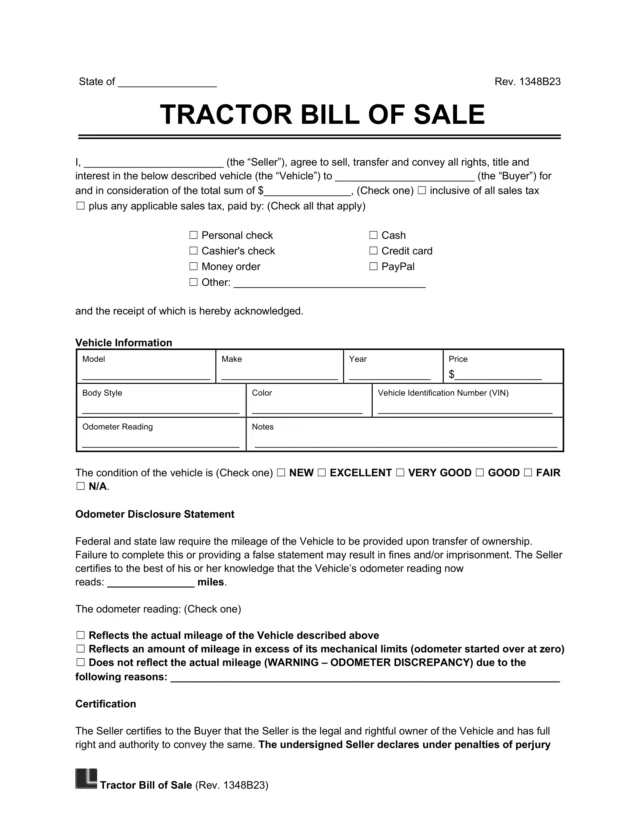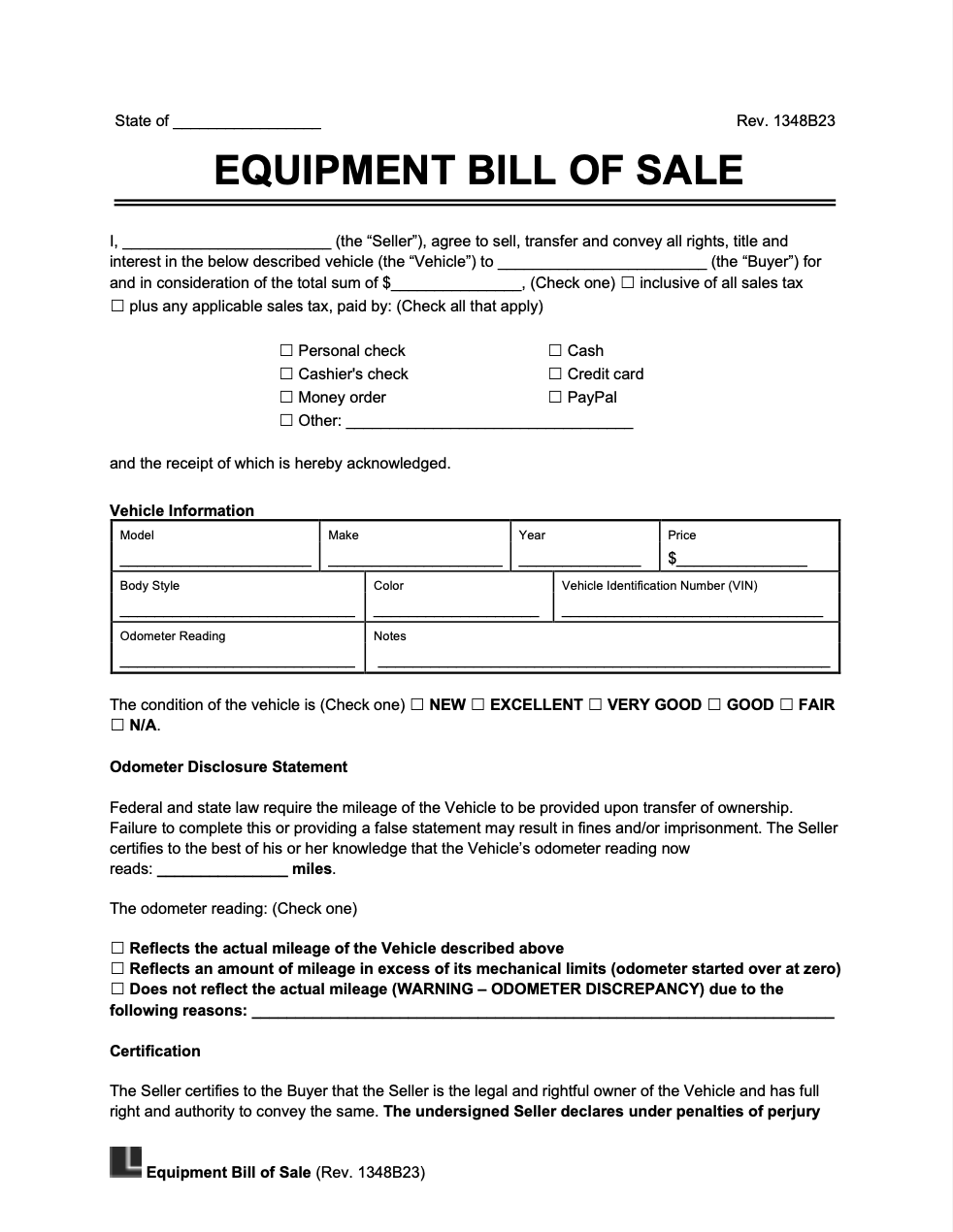What Is an Equipment Bill of Sale?
An equipment bill of sale transfers ownership of high-value equipment from the seller to the buyer. It provides a record of the transaction, details the sale terms, and protects both parties in case of disputes.
This legally binding document records details unique to heavy equipment, like equipment type, maintenance history, and operational status. Many parties use an equipment bill of sale to transfer ownership of machinery falling into one of these categories:
- Business equipment (i.e., forklifts and bucket trucks)
- Construction equipment (i.e., skid steers and bulldozers)
- Farm equipment (i.e., balers and combines)
- Forestry equipment (i.e., log skidders and mulchers)
- Industrial equipment (i.e., generators and conveyors)
- Landscaping equipment (i.e., wood chippers and stump grinders)
- Mining equipment (i.e., dump trucks and drilling rigs)
- Specialized equipment (i.e., street sweepers and concrete mixers)
It’s important to document your equipment sale in writing. Under the Uniform Commercial Code § 2-201, any sale of goods valued at $500 or more must be in a written agreement. This applies to many equipment transactions, so using a heavy equipment bill of sale helps you meet this requirement.
Does a Bill of Sale Give Title to Business Equipment?
A bill of sale plays a key role in transferring ownership of business equipment. However, a separate certificate of title might be necessary for registration, which you can often use your bill of sale to obtain.
How to Fill Out a Bill of Sale for Equipment
Writing a bill of sale for equipment helps you document key details of an equipment sale. Follow these four steps to get your transaction in writing.
Step 1 – Name the Parties
Give the following information for the seller and buyer of the equipment:
- Name
- Address
- Phone number
Step 2 – Describe the Equipment
Describe the heavy equipment for sale in as much detail as possible. This way, the seller will know what they must provide to the buyer, and the buyer will know what to expect. Here are some key details to include for your piece of heavy equipment:
- Equipment type (loader, forklift, excavator, etc.)
- Model and series number (similar to the Vehicle Identification Number on a vehicle bill of sale)
- Hour meter reading (similar to an odometer reading)
- Engine hours vs. total machine hours
- Operational status (fully operational, operational with defects, non-operational)
- Condition (new, like new, excellent, good, fair, used)
- Previous use type (i.e., construction, agricultural)
- Job-site wear
- Attachments included (i.e., buckets, forks, hydraulic breakers)
- Emissions compliance status
- Hydraulic system condition
- Undercarriage condition
- Recent safety inspection dates
If you’re writing a bill of sale for farm equipment, you may include different details than if you were writing a bill of sale for construction machinery. With a customizable equipment bill of sale, you can tailor the document to fit the exact type of equipment you’re selling and include any details that matter for your specific transaction.
Step 3 – Document the Sale Terms
Document the following sale terms for your heavy equipment transaction:
- Warranty transferability (if it’s still under a manufacturer or a dealer warranty)
- As-is status (whether the equipment will be sold with no further modifications or repairs)
- Sales price (and whether sales tax is included)
- Delivery or unloading fees
If the piece of equipment is being financed or has a lien, these matters must typically first be settled before ownership of the item can transfer.
Step 4 – Finalize the Form
Finalize your equipment bill of sale form by including the date of sale. While it’s often optional, you can also consider getting notary acknowledgment for your document. When a notary public witnesses your and the buyer’s signatures, it can prevent fraud and minimize disputes later.
Equipment Bill of Sale Sample
View a free example of an equipment bill of sale template so you know what elements to include. Then, create your own using Legal Templates’s guided form. It’ll be available to download as a PDF or Word file when you’re done, which you can store in your records and present as needed for registration.







